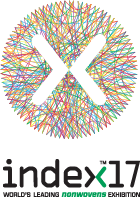Breaking up is easy to do
For over a decade now, the nonwovens industry, represented by its organisations EDANA and INDA, has collaborated with relevant wastewater agencies in a bid to reduce the amount of non-flushable nonwoven materials – most notably wipes – in the wastewater stream.
Among other things, this has resulted in the development of a solid and transparent set of Flushability Guidelines which are being put in place by manufacturers of such products. Now in their 3rd edition, the guidelines define exactly what counts as flushable, and a ‘Do Not Flush’ labelling practice established for products which do not meet the guidelines since 2009.
The issue of flushability, however, has also been the focus of intense development work by manufacturers of nonwoven technology, not least the leaders in the field of hydroentanglement systems: Andritz Nonwoven and Trützschler. Happily, this has led to new avenues of success for both companies – and their satisfied customers – over the past few years.
Contradiction
There is an inherent contradiction, of course, in respect of what is expected of a flushable nonwoven wipe.
It has to be strong enough to withstand the rigours of both production and packaging machines, followed by its transportation and time spent on the supermarket shelf. And once out of the packet, it has to possess all the necessary properties expected of an effective wipe.
And once in the toilet, it has to disappear as quickly as possible, and travel safely through the sewer network.
“It’s almost a perfect contradiction,” says Tobias Schäfer, General Manager at Andritz Küsters. “The material needs excellent tensile strength, because in production it’s pulled by the winder through the different stages of the process line to start with. Then, during the converting of the product, it’s impregnated and packed and the end-user expects a wipe that doesn’t disintegrate before or during use. Once flushed, this stability has to completely disappear so the product will virtually dissolve in the sewage water system. In effect, the wipe has to become invisible. Or it certainly shouldn’t be recognisable as a wipe, at least.”
It is the combination of the wetlaid process – the technology behind paper making as well as nonwovens – with hydroentanglement that makes the production of flushable nonwovens on the company’s Wetlace system so effective.
“The main impact comes from the fibre blend between the wood pulp and man-made cellulosic fibres, the wet web forming on the inclined wire and the mechanical bonding of the web by the hydroentanglement unit,” explains Frederic Noelle, R&D Manager at Andritz Perfojet. “Wetlaid production is perfect in terms of achieving an excellent web uniformity and product quality. Hydroentanglement ideally complements the wetlaid technology by creating entanglement of the fibres without any chemical binders or thermoplastic fibres.”
Wet processes
A similar technological solution has been developed by Trützschler, who teamed up with fellow German company, Voith Paper, on its development.
Both the HydroFormer – Voith Paper’s wet laying machine – and the AquaJet spunlacing unit of Trützschler, are highly productive and efficient solutions that have already proven themselves in dozens of installations all over the world.
“This cooperation allows us to offer our customers a complete line, ranging from wet laying and bonding, to drying and winding,” says Dr Klaus Afflerbach, who is responsible for the development of special machines within Voith Paper. “The combination of two wet processes in the form of the HydroFormer and the AquaJet results in an extremely high-quality flushable web.”
At the INDEX™14 nonwovens show in Geneva last year, Trützschler and Voith announced that leading wipes nonwovens manufacturer Albaad of Israel had independently developed proprietary technology for flushable fabrics as per the latest EDANA/ INDA guidelines and had chosen Voith Paper and Trützschler as the technology partners for its commercialisation.
A new line being built in Dimona, Israel has been engineered to allow a wide variety of customised flushable nonwovens to be made is scheduled to start up this year.
Pioneer
Another INDEX exhibitor, Suominen, has been an acknowledged pioneer in the development of flushable nonwovens, introducing its Hydraspun Dispersible substrates in the late 1990’s.
During 2014, the company completed its investment in a capacity expansion for the proprietary production of flushable nonwovens at its Windsor Locks plant in the US, and this year has introduced Hydraspun Dispersible Plus.
This new range of flushable substrates breaks up over three times faster than the standard Hydraspun products and clearly passes the latest INDA/ EDANA flushability assessment test protocol.
Register now to be kept up to date with the latest news and developments from INDEX™17
Please note that by providing your details you accept that you will receive e-mail updates on the INDEX exhibition from the event organisers or its direct agents.
You may unsubscribe at any time.

